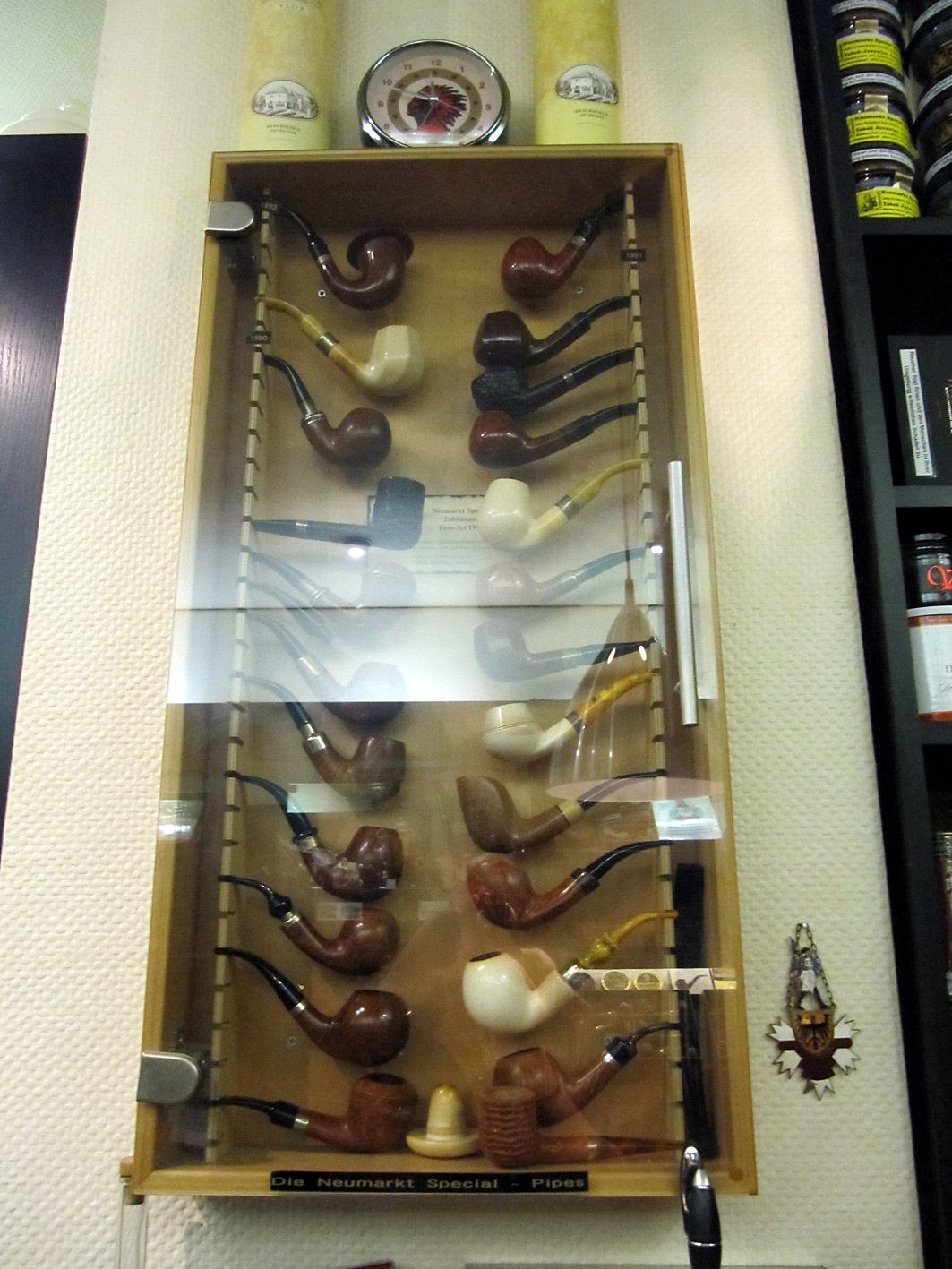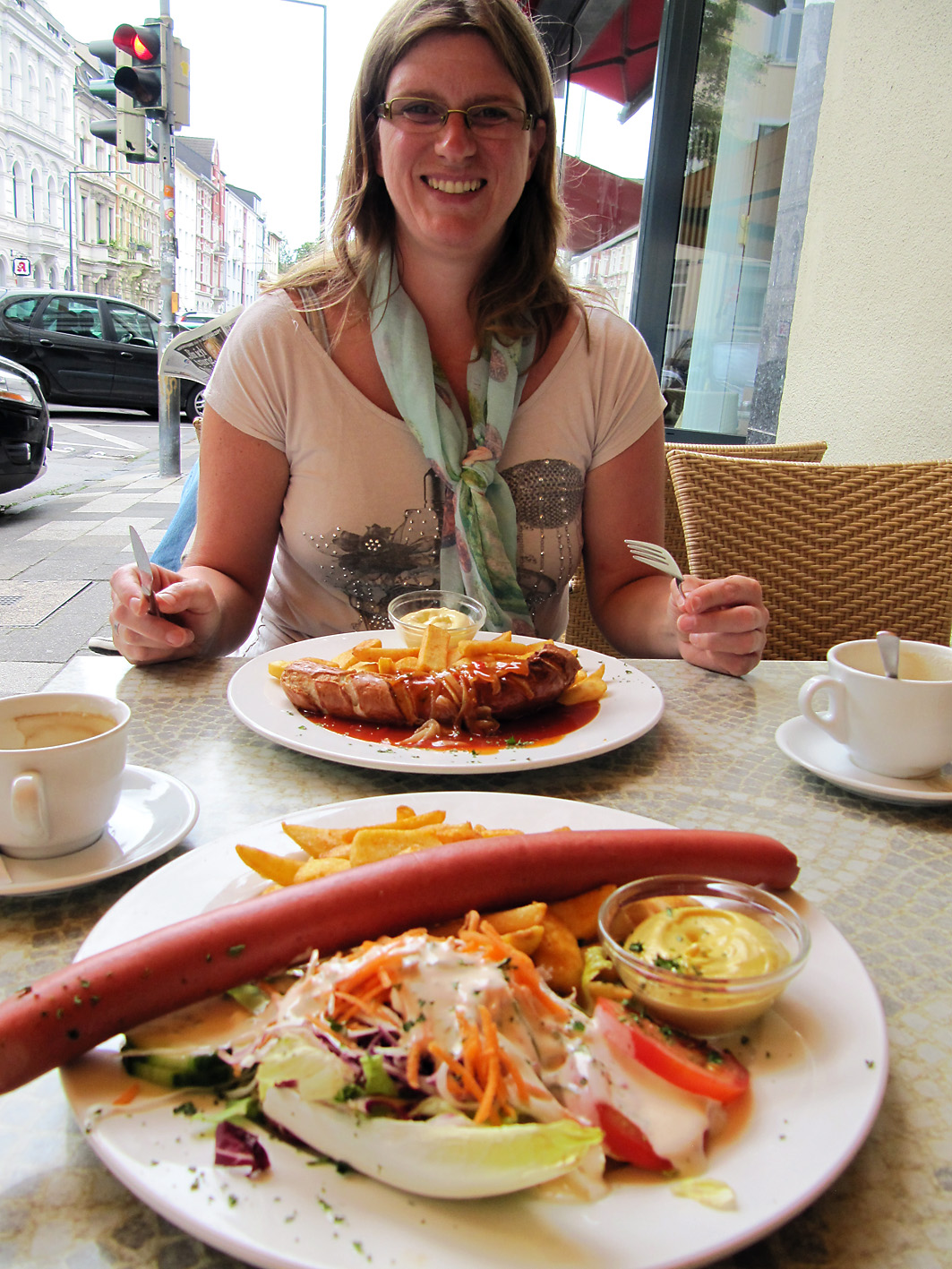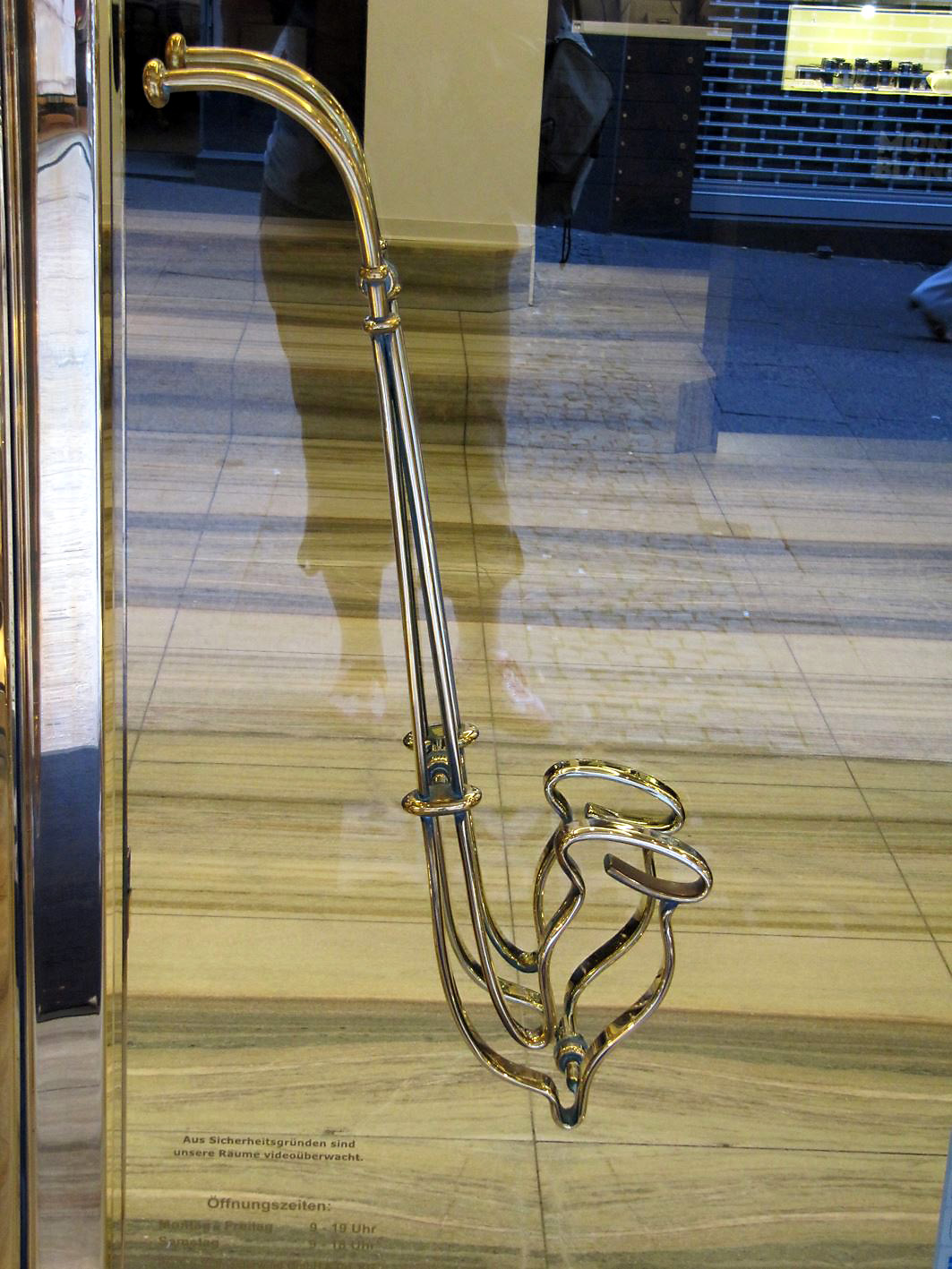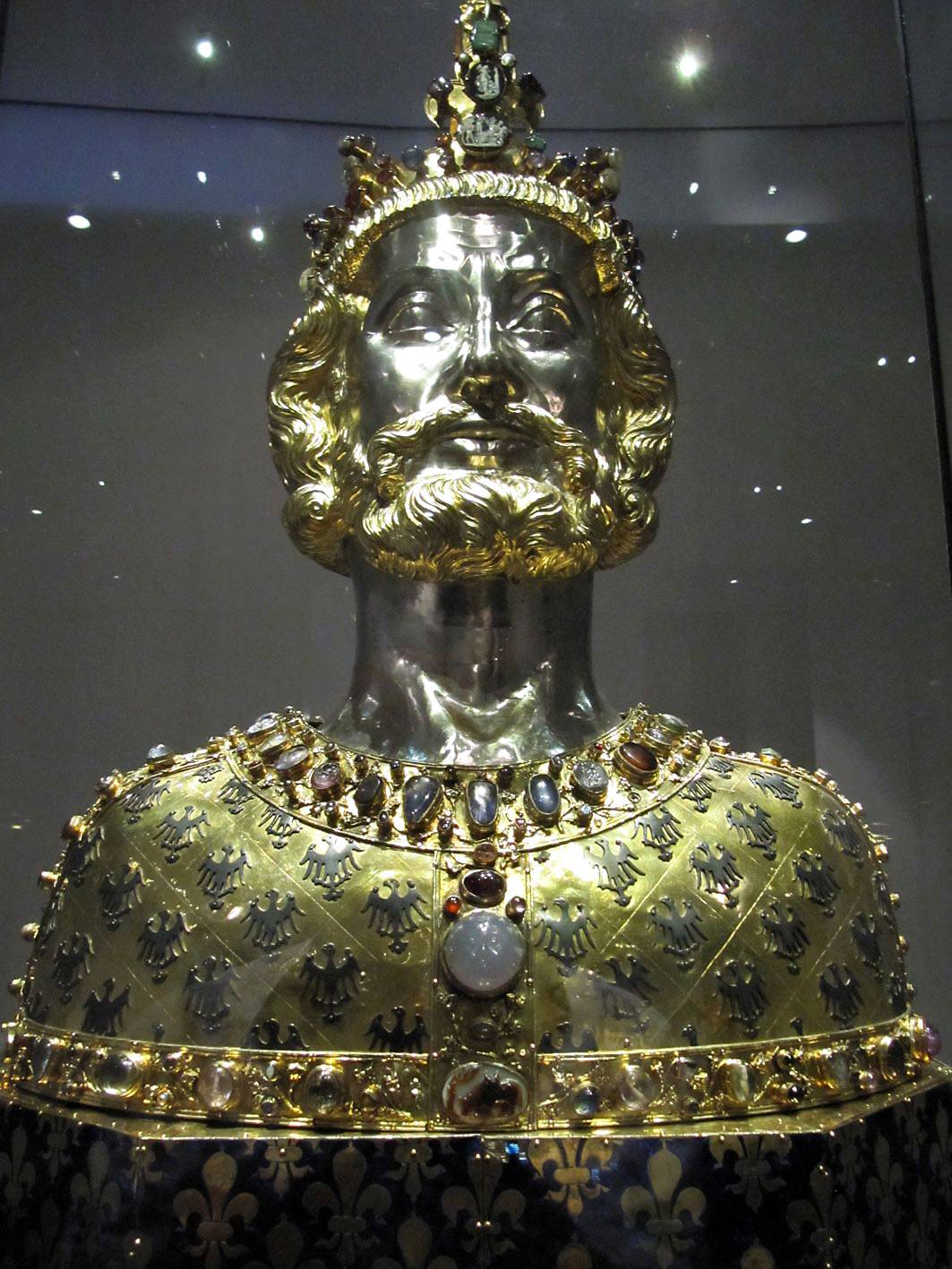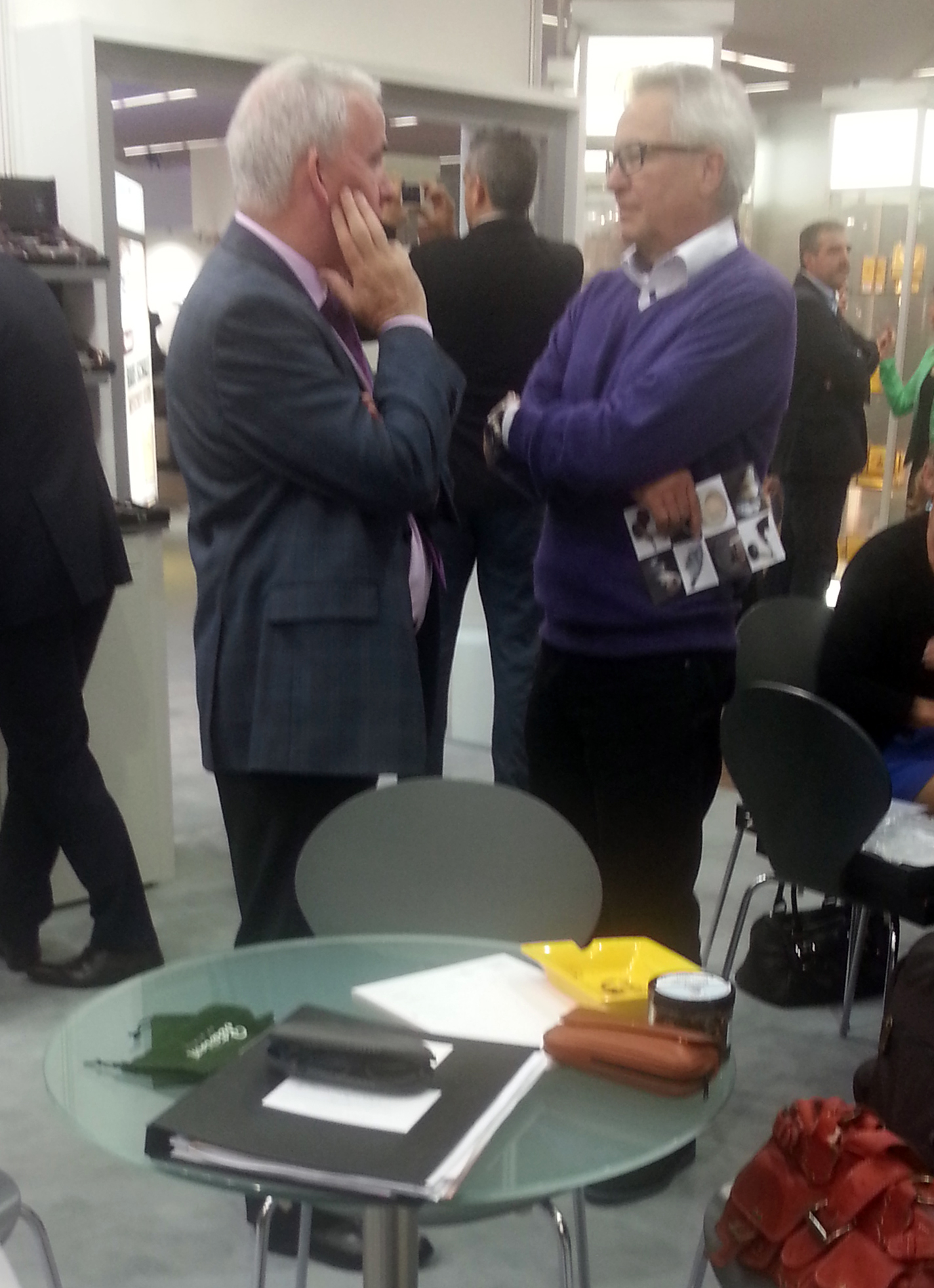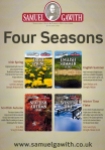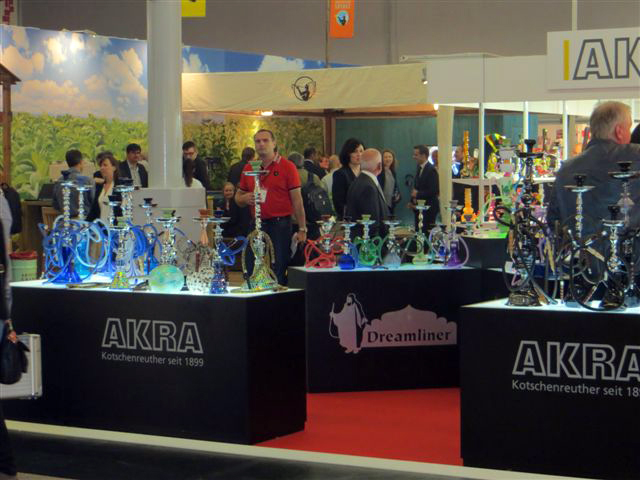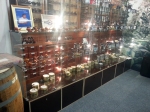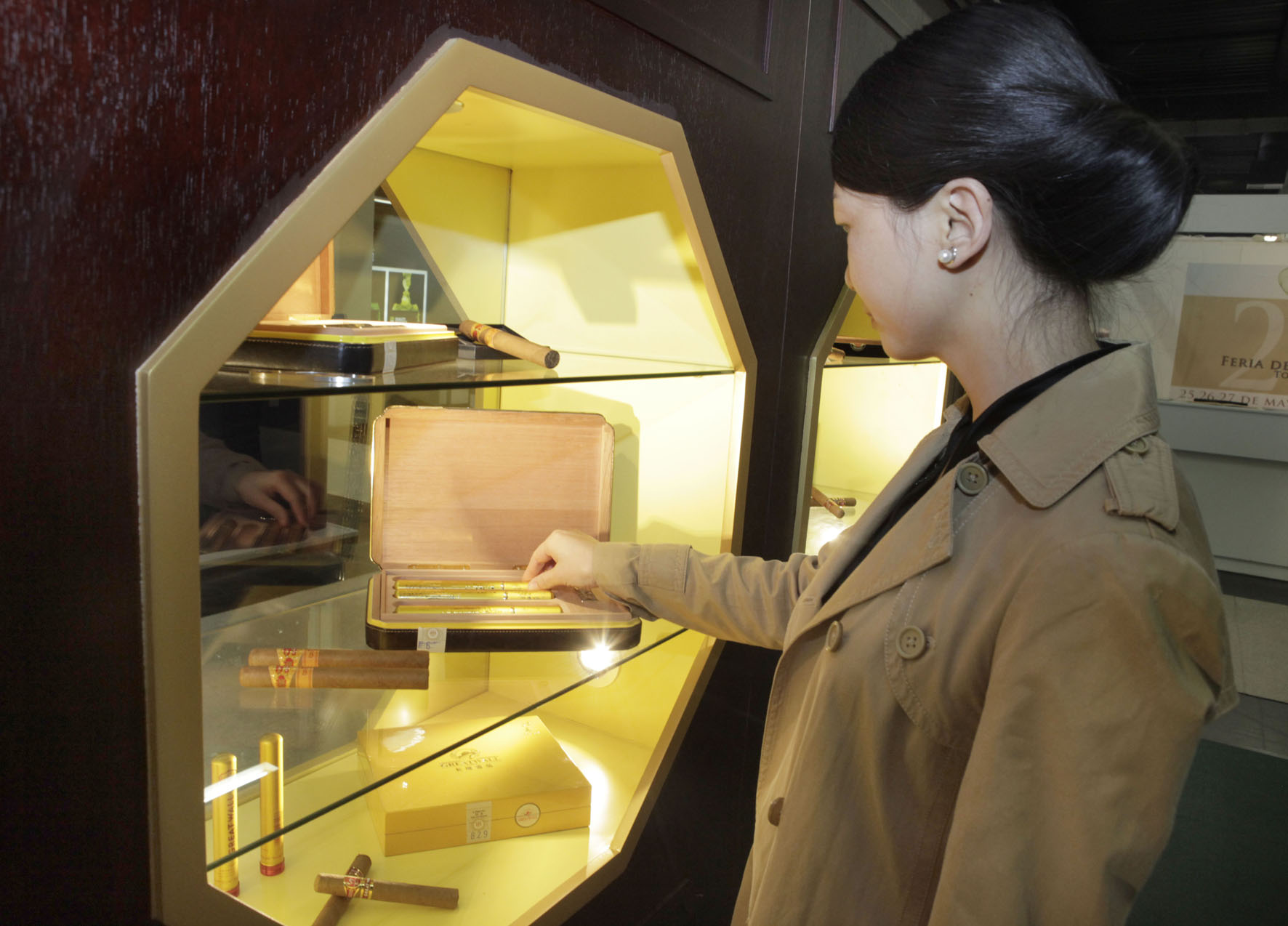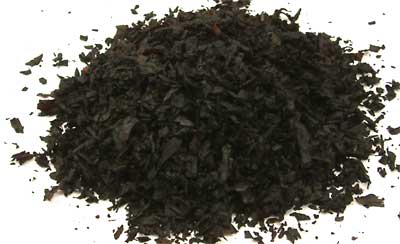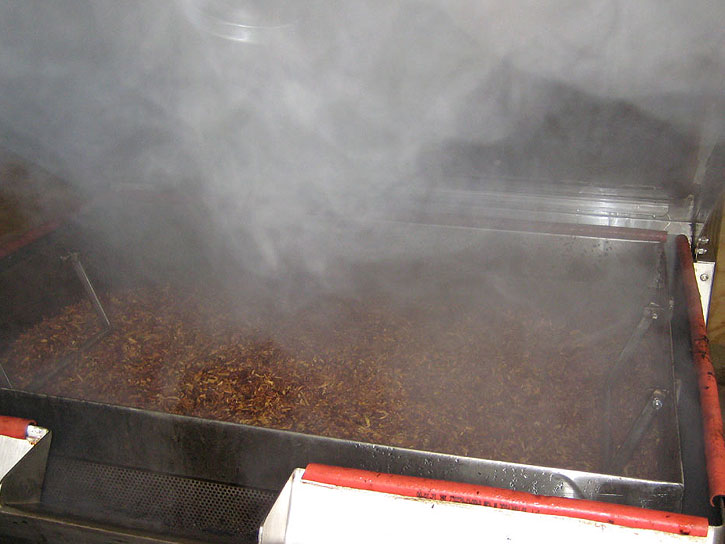Aachen, the favoured residence of the great emperor Charlemagne and later the place of coronation of many kings is one of my most beloved German cities to visit. Why? It is close to The Netherlands, is a good mix between young and old (structures and people) and it has a relaxed atmosphere that I like. And, very important, it has not one, but two excellent tobacconists: Schneiderwind and Jurewicz. Ellen and I visited Aachen a couple of weeks ago and my first stop was the Jurewicz store because it is located outside the city centre. Ellen did not feel like going inside so she went for a bit of sight seeing.
In the Frankerberger district near the Neumarkt at the Bismarckstraße nr. 107 is the tobacco-store located of Hans-Dieter Jurewicz. He is so well known in the area that he is called “the mayor of Neumarkt” by its inhabitants under whom a lot of artists, intellectuals and alternative people. Thus his shop also functions somewhat as a community-house where Frankerberger folks meet each other. The store is run by Mr. Jurewicz and his wife Ursula and at first sight looks smaller than it really is. Upon entering you see the big counter with behind it the cigarettes, newspapers etc., the domain of Mrs. Jurewicz. However, beside the counter is a passageway to the larger back of the shop where lots of pipes, accessories and tobaccos are displayed. Here Mr. Jurewicz reigns supreme. And like a thin, grey wizard he comes forth smiling from behind the storage-room curtain waving with his pipe (or a small cigar) as it were a magic wand.
 Last year I also was at the store and when we shook hands I was not certain if he recognized me. If he didn’t, he certainly did not show it. Mr. Jurewicz is an old-fashioned salesman with a heart for his customers and he immediately swipes you off your feet with his enthusiasm. I was offered something to drink and I could have it all; coffee, soda, water or perhaps a glass of his house-label whisky. I opted for a cup of the caffeine-rich liquid and we started chatting away. Luckily for me Mr. Jurewicz speaks a bit Dutch, his daughter has studied in Maastricht, and he can certainly understand it.
Last year I also was at the store and when we shook hands I was not certain if he recognized me. If he didn’t, he certainly did not show it. Mr. Jurewicz is an old-fashioned salesman with a heart for his customers and he immediately swipes you off your feet with his enthusiasm. I was offered something to drink and I could have it all; coffee, soda, water or perhaps a glass of his house-label whisky. I opted for a cup of the caffeine-rich liquid and we started chatting away. Luckily for me Mr. Jurewicz speaks a bit Dutch, his daughter has studied in Maastricht, and he can certainly understand it.
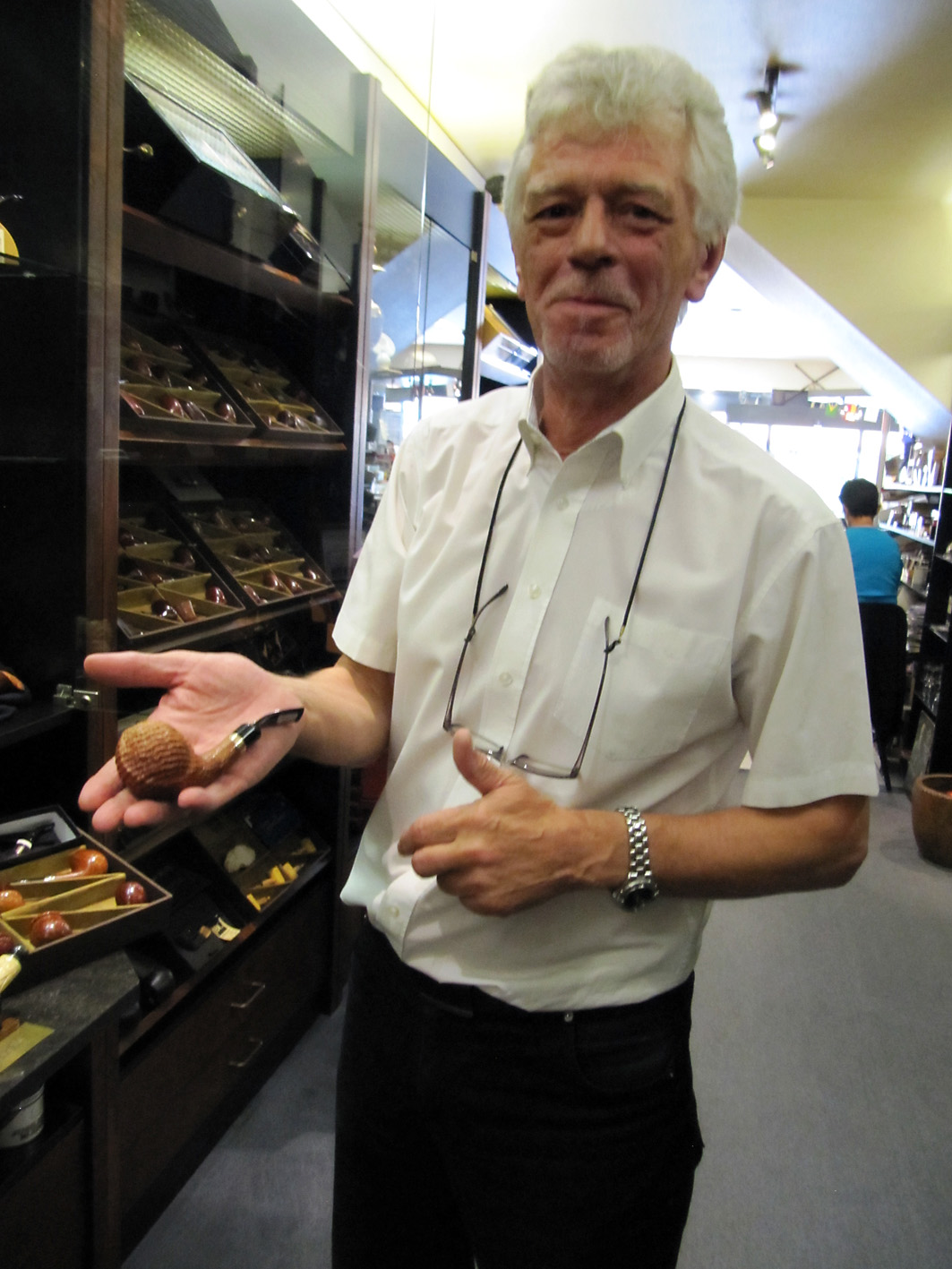 Mr. Jurewicz is very proud of his business and his house-brand. Prominently displayed are the Neumarkt-Special Pipes, his year-pipes, made by pipe-artists like Erik Nørding, Roberto Ascorti and Damiano Rovera. I even got a sneak-peak on the computer screen behind the storage-room curtain at the pipe of this year, also made by Damiano Rovera. It is going to be a beauty! You also can’t miss all the (numbered) house-blends ranging from aromatics to flakes to English mixtures. I can personally recommend the Neumarkt Special 2002 (reminiscent of Orlik Golden Sliced) and Neumarkt Special 2003 (reminiscent of Orlik Dark Strong Kentucky). On the small counter I saw a bottle of whisky with a Neumarkt Special label but I forgot to ask about it..
Mr. Jurewicz is very proud of his business and his house-brand. Prominently displayed are the Neumarkt-Special Pipes, his year-pipes, made by pipe-artists like Erik Nørding, Roberto Ascorti and Damiano Rovera. I even got a sneak-peak on the computer screen behind the storage-room curtain at the pipe of this year, also made by Damiano Rovera. It is going to be a beauty! You also can’t miss all the (numbered) house-blends ranging from aromatics to flakes to English mixtures. I can personally recommend the Neumarkt Special 2002 (reminiscent of Orlik Golden Sliced) and Neumarkt Special 2003 (reminiscent of Orlik Dark Strong Kentucky). On the small counter I saw a bottle of whisky with a Neumarkt Special label but I forgot to ask about it..
However, I did ask Mr. Jurewicz if he was willing to do a short interview and he was:
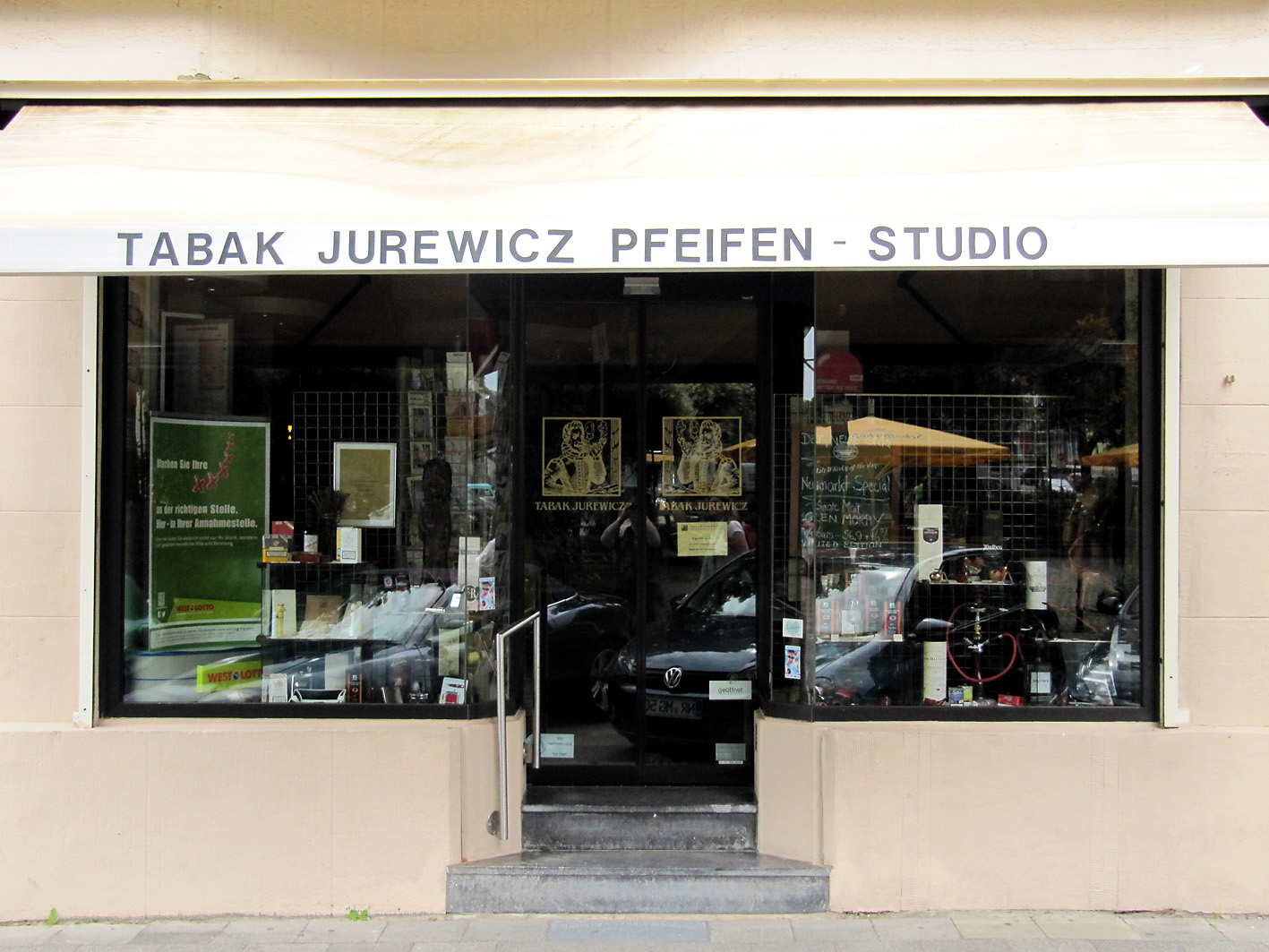 1. Can you tell me something about the history of the store?
1. Can you tell me something about the history of the store?
This year we exist 40 years! For the rest see this. And he hands me over a brochure with the history of the shop. I shall briefly go through the key-years. July 1th 1974: The tobacco and lottery store from Mrs. Elly Keller was taken over. 1977: The first pipe-studio was created inside the shop. Also the brand name “Neumarkt Special” was founded for house-blends (everything with the “Neumarkt Special” name has to be of high quality!). 1987: After a long reconstruction a larger pipe-studio was created. 1990: The first of the year-pipes was created by Sedat Konçak. 1999: The first website went online.
2. What are your most sold pipe-tobaccos?
My house-brands of course. Since German pipe-smokers like it sweet proportionally it is I guess about 85% aromatics and 15% English mixtures.
3. What are your most sold pipes?
Very nationalistic, but that would be German brands like Vauen. And my year-pipes also sell well. Behind that are brands like Stanwell and Winslow. As far as high end pipes go I would say Dunhill. A shame that you were not here yesterday, I sold a Dunhill Christmas Pipe. Very expensive but also very beautiful!
4. Do a lot of tourists/casual visitors visit your store or do you have a lot of regular customers?
I get a lot of regular customers but also many people come here because they found my shop through internet.
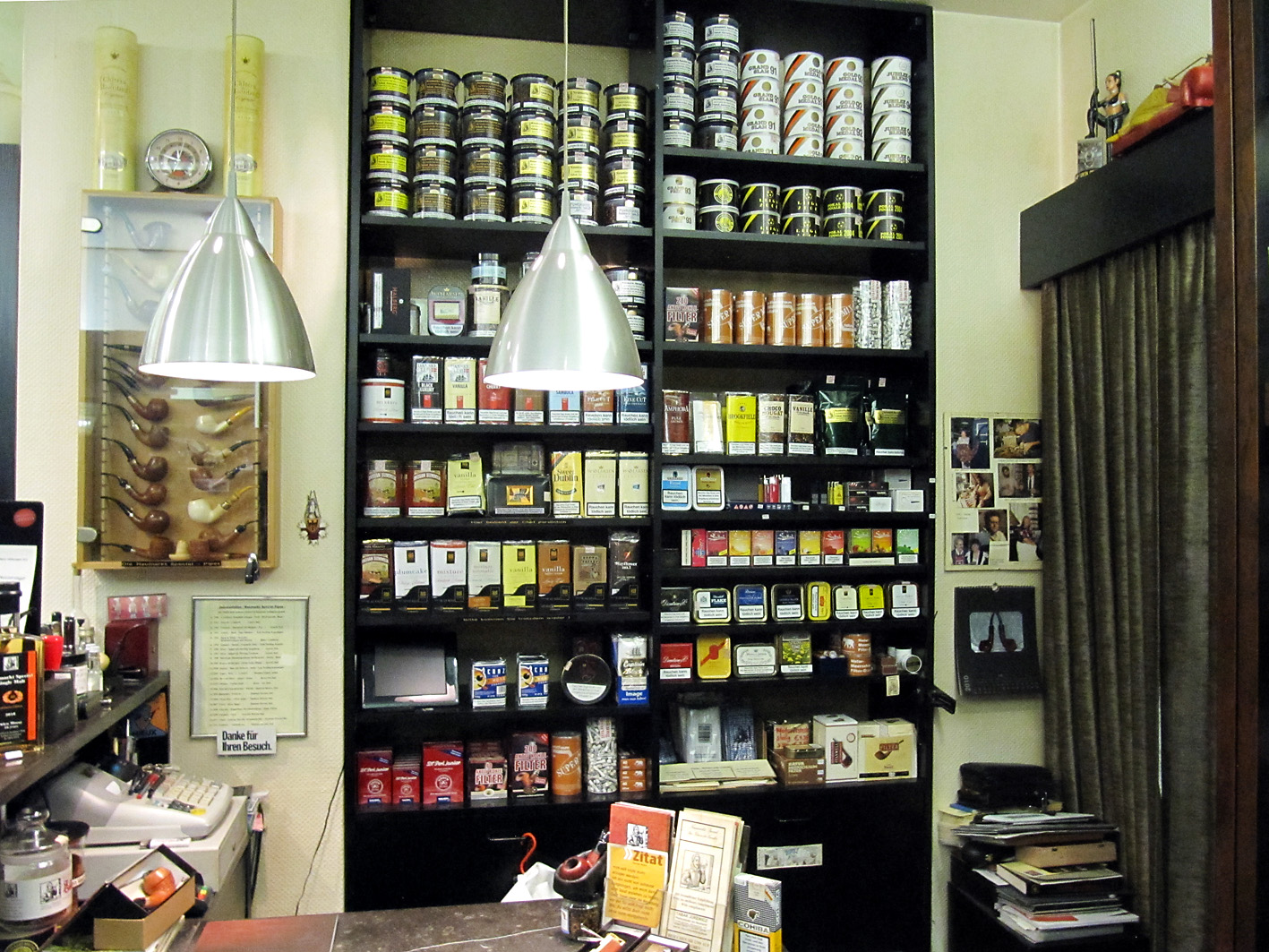 5. Do you notice anything of the anti-smoking feelings/laws? Does it harm your sales?
5. Do you notice anything of the anti-smoking feelings/laws? Does it harm your sales?
As far as cigarettes goes, yes. But remarkably sales of cigars and pipes/pipe-tobacco are rising! I guess it is because a lot of people quit with cigarettes and start smoking pipes because they want to enjoy themselves more.
6. What do you like to smoke yourself?
That differs from day to day. I usually start with a light blend and then heavier mixtures. But not too sweet. When I don’t smoke pipe I like to light up one of my special cigarillos filled with pipe-tobacco. You know, I once had a rich Arab customer visiting my shop. He said that he wanted something unique, something nobody else has. So I sold him some of the special pipe-tobacco filled cigarillos. He loved those.
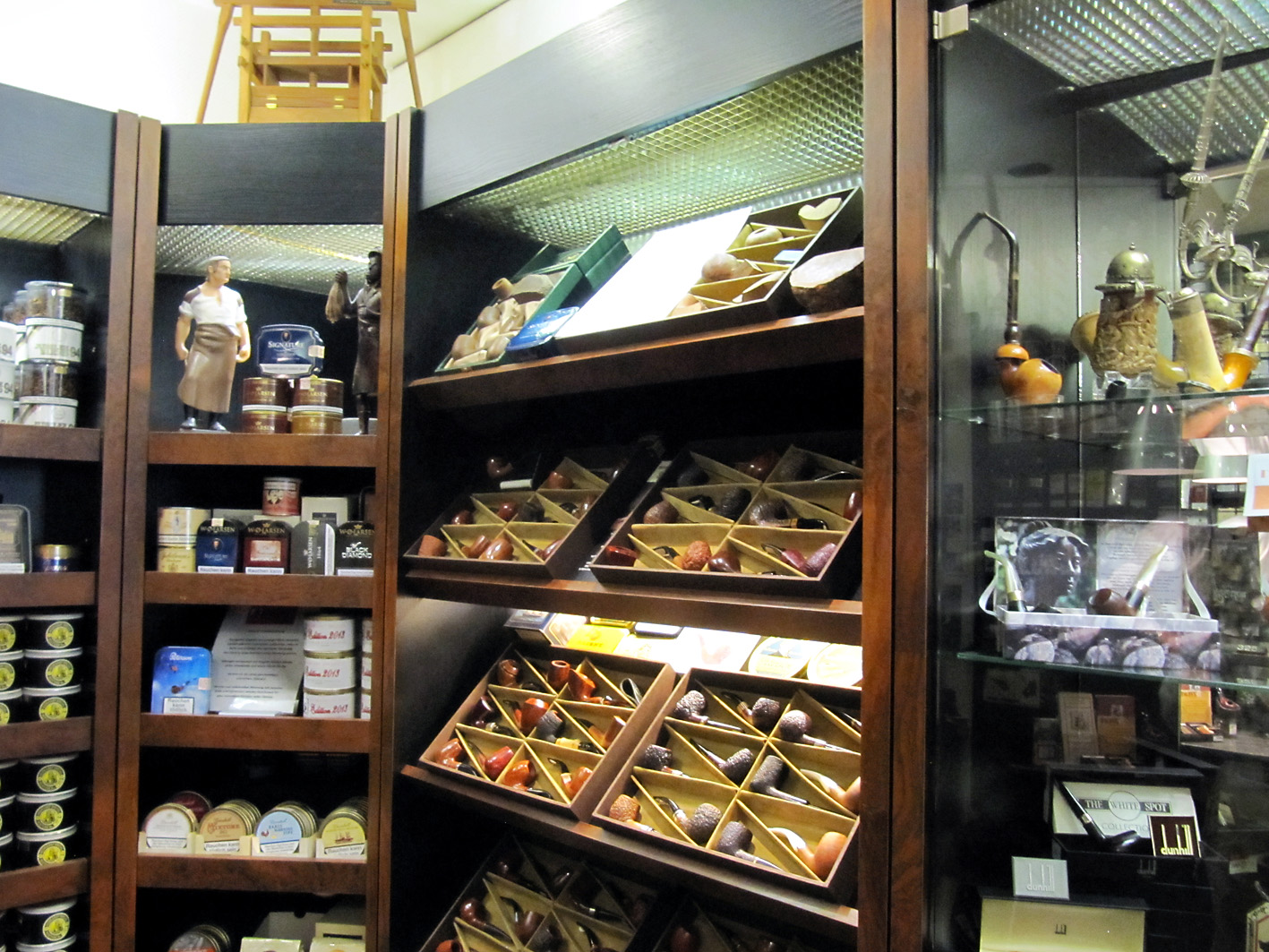 7. Any last words to readers?
7. Any last words to readers?
I look forward to meeting anyone who enjoys himself and comes here. Also, because of the 40th anniversary of my store I will have a celebration 24 & 25 October where, amongst other things, the new year-pipe will be revealed.
After the interview I bought a tin of Neumarkt Special Mixture no.22, shook hands with Mr. Jurewicz, thanked him for his time and went outside looking for Ellen. It turned out she sat at a nearby café/restaurant enjoying a cup of cappuccino. Since the time was just after noon we decided to have lunch at the place. Ellen opted for a “Currywurst” and I choose a “Bockwurst“. And this is one of the reasons I like Germany, because you get value for money. Two large plates arrived after a short wait with a really whopping big Wurst on each of them completed by fries, sauces and salad. Price? Around €6 ($8) for each dish, a bargain, which made this cheap-ass Dutchman smile.
Still clutching our full bellies we headed for the Aachen city-centre where the other tobacconist is located: Schneiderwind. The location of the store in the Kramerstraße is top-notch. At the beginning of the street you have the cosy market place with the beautiful Rathaus (city-hall) and on the other end you bump against the magnificent Aachener Dom (Aachen Cathedral). I have been to Schneiderwind before and when I heard from a fellow Dutch/Belgian forum member that they were going to move I wanted to visit the old store one last time. Ellen went off towards the market place so I could do “my thing”.
Every time I walked into the shop it was crowded with customers, this time was no exception. A line of people stood there waiting to be helped so I waited my turn and walked around the store. It is pretty small but cosy with a fitting old-style interior filled with boxes containing cigars and whisky, tins of tobacco and of course pipes. Beside this part of the shop is a more modern part where you can find the more luxury goods. It was a hot day, the shop had no air-conditioning (well, if it has I surely did not feel it) so a glass of cold water (or another beverage) while waiting would have been nice. I also think the staff could have used some cold drinks, they looked a bit hot and stressed out..
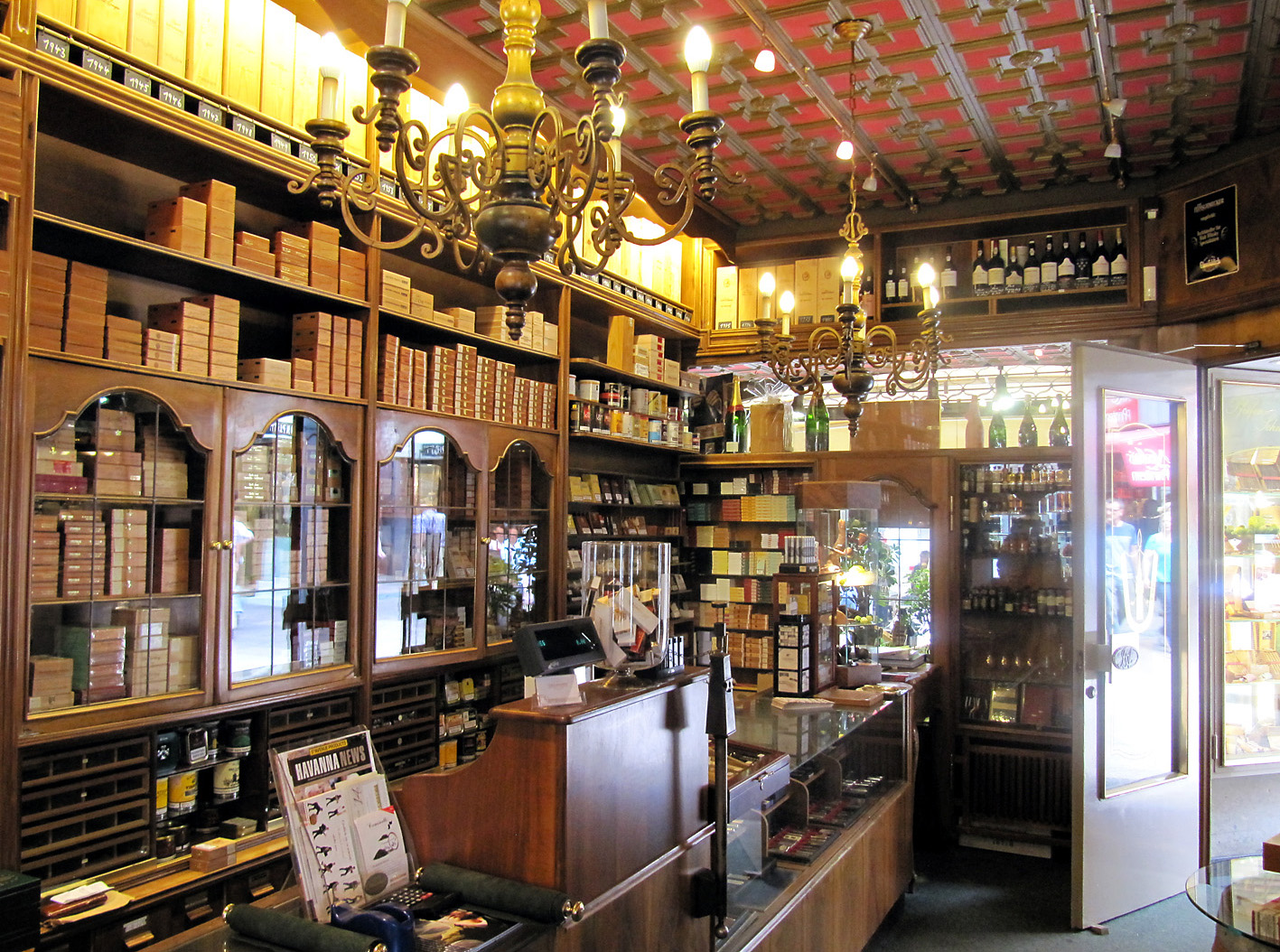 When it was my turn I quickly explained to a friendly lady who I was and that I would like to do a short interview with Mr. Offermans, one of the managers. Unfortunately he was having lunch and the other manager, Mr. Christian Grün, was helping another customer, so I had to wait for him. Suddenly the store was empty of people (very rare!) so I could take a few pictures of the interior. Luckily it did not take too long before Mr. Grün appeared. I also quickly explained to him who I was and that I would like to do a short interview but unfortunately my timing was not so good. He very politely told me it was too busy (hmm, I still was the only one in the shop but ok) but if I mailed him my questions he would answer them to the best of his abilities. I was thinking that the process of buying a pipe would have taken less time than the interview but I did not want to argue with him. I bought a tin of Darley Moor and the new version of Dunhill’s Durbar, shook hands and went on my way to find Ellen. Once home I mailed my questions and within a few days got a neat reply with the answers:
When it was my turn I quickly explained to a friendly lady who I was and that I would like to do a short interview with Mr. Offermans, one of the managers. Unfortunately he was having lunch and the other manager, Mr. Christian Grün, was helping another customer, so I had to wait for him. Suddenly the store was empty of people (very rare!) so I could take a few pictures of the interior. Luckily it did not take too long before Mr. Grün appeared. I also quickly explained to him who I was and that I would like to do a short interview but unfortunately my timing was not so good. He very politely told me it was too busy (hmm, I still was the only one in the shop but ok) but if I mailed him my questions he would answer them to the best of his abilities. I was thinking that the process of buying a pipe would have taken less time than the interview but I did not want to argue with him. I bought a tin of Darley Moor and the new version of Dunhill’s Durbar, shook hands and went on my way to find Ellen. Once home I mailed my questions and within a few days got a neat reply with the answers:
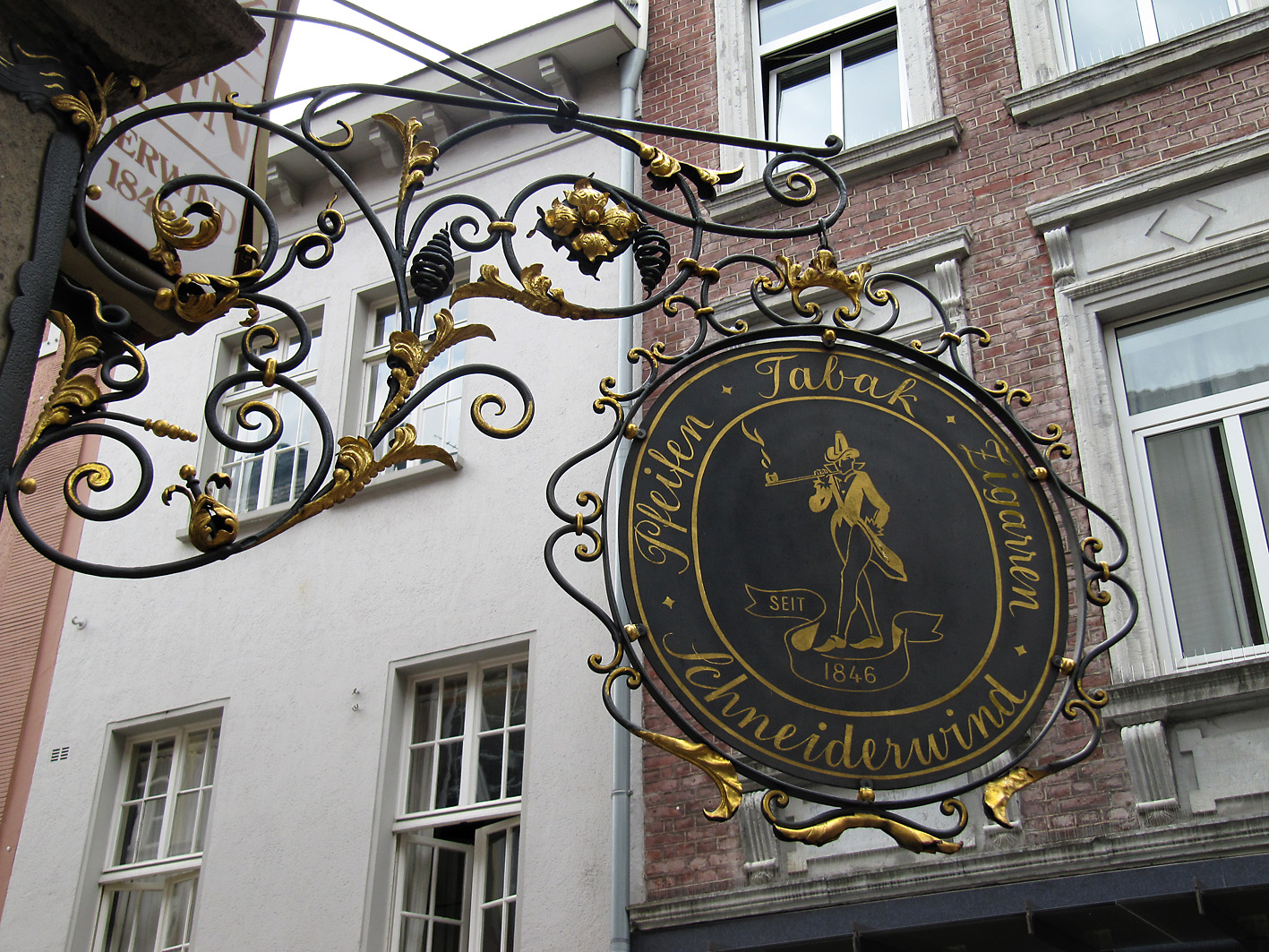 1. Can you tell me something about the history of the store?
1. Can you tell me something about the history of the store?
In 1846 the store was founded in 1846 in the Kramerstraße. Since the beginning of the 1970’s the shop is in the possession of the Offermans family. In 2004 the son, Marius Offermanns, purchased it from his father. Since April 2014 the store is run by Marius Offermanns and myself, Christian Grün. Our forthcoming move to a bigger building at the Lindenplatz in Aachen 11 and 12 October is the biggest change in the history of the traditional Schneiderwind shop. This step will ensure the future of one of the oldest tobacconists in Germany.
 2. What are your most sold pipe-tobaccos?
2. What are your most sold pipe-tobaccos?
In our store the most sold pipe tobaccos are mainly our hand-mixed home-blends. I especially want to mention our long-time classics “1846” and “Tea Time“.
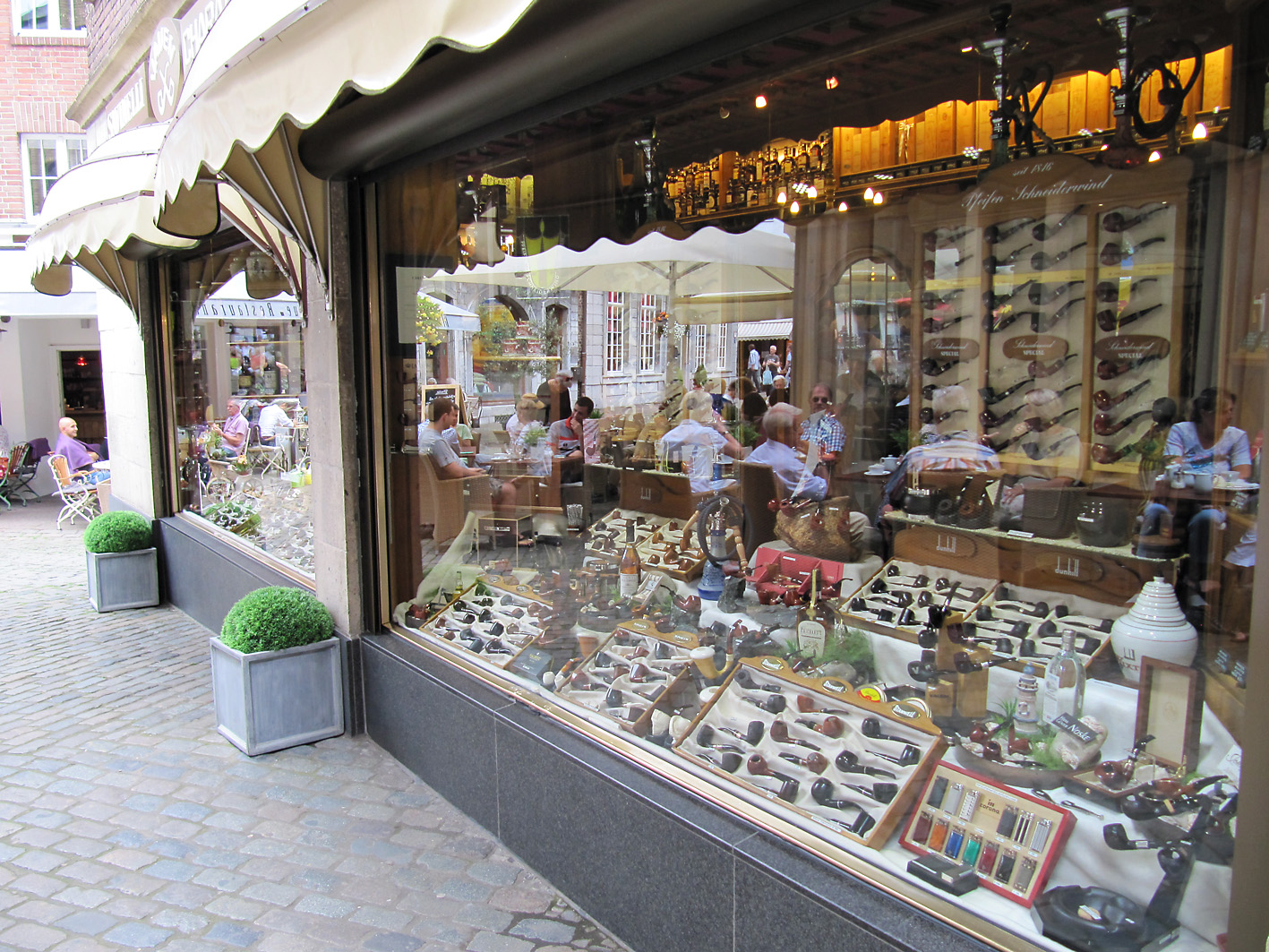 3. What are your most sold pipes?
3. What are your most sold pipes?
Since we have over 7000 pipes available, this question is not easy to answer. Certainly the pipes that we develop together with the “John Aylesbury” group of shops in Germany are one of the strong sellers.
4. Do a lot of tourists/casual visitors visit your store or do you have a lot of regular customers?
Last year, in preparation for the decision of our forthcoming move, we asked each of our customers just that. Amazingly this survey has shown that the proportion of regular customers including customers who specifically come to us, is more than 95%. Thus we can say that we have few tourists or random visitors.
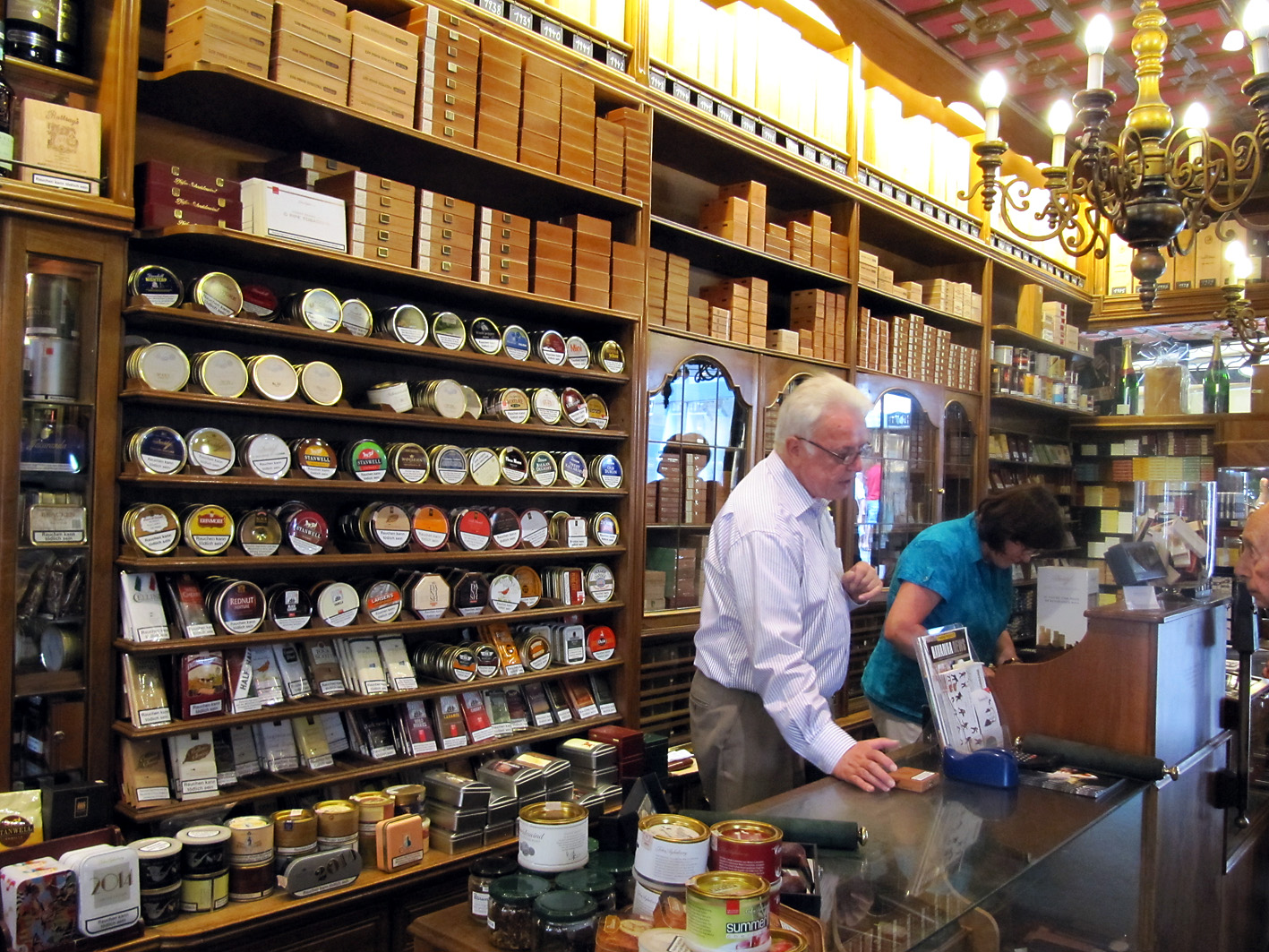 5. Do you notice anything of the anti-smoking feelings/laws? Does it harm your sales?
5. Do you notice anything of the anti-smoking feelings/laws? Does it harm your sales?
Of course the strict anti-smoking laws had their influence at our store. However, we see more and more that the pleasure-smokers do not let themselves discourage by all of this. The “smear-campaign” in the media of recent years has decreased remarkably and therefore the mood in general has become calmer. In the growth of our sales we recognize a very clear trend for high quality enjoyment. This is also one of the reasons for the significant enlargement of our assortment at our new location.
6. What do you like to smoke yourself?
Smoking is a pleasure I will not take for granted. The most aromatic variant of smoking is still the pipe. With enough time, leisure and tranquillity I very much enjoy the Premium Blend mixture from the house of John Aylesbury. In the cigar area the launch of the Davidoff Nicaragua Series excites me.
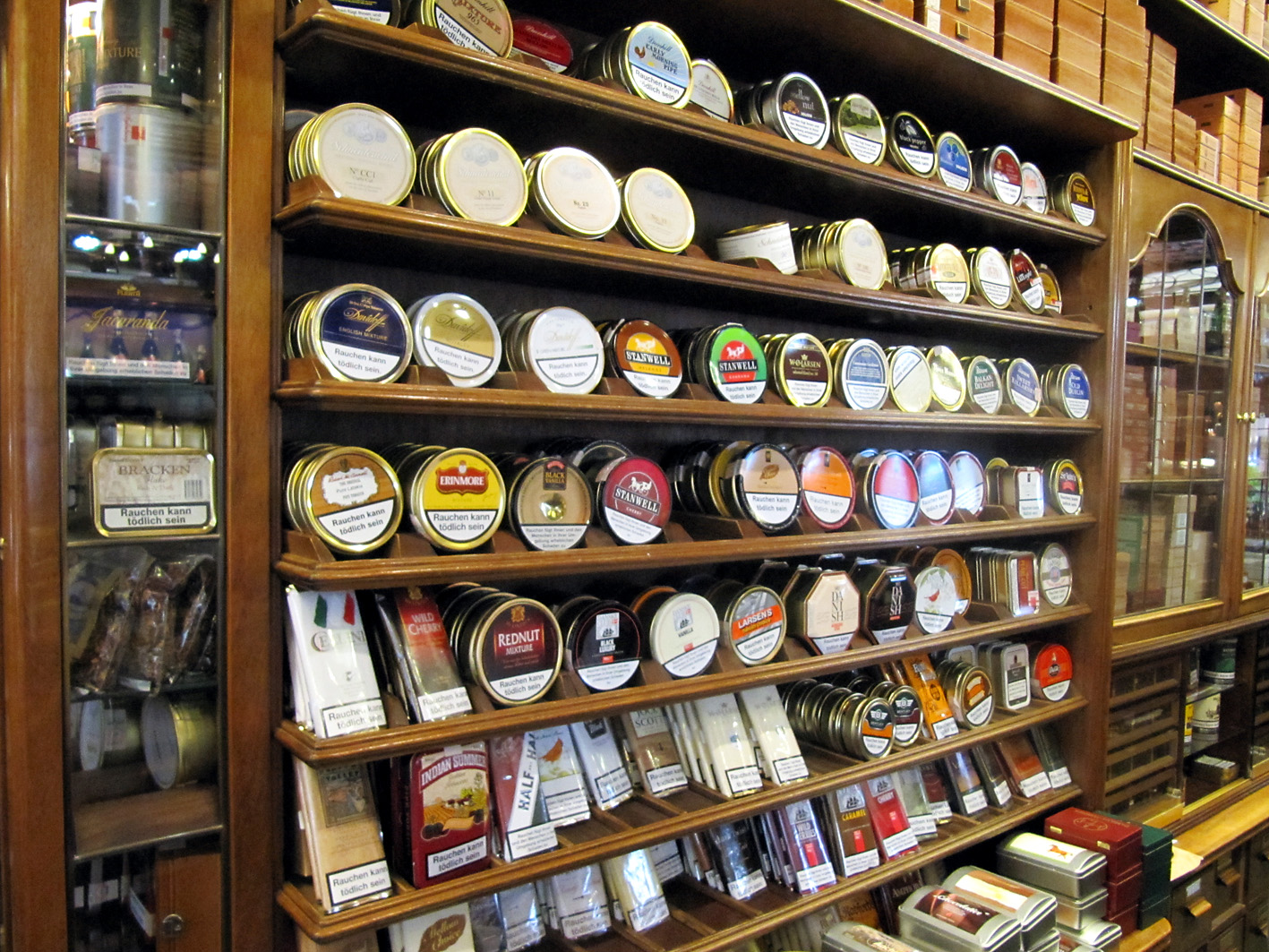 7. Any last words to readers?
7. Any last words to readers?
Many thanks to all people who like to enjoy themselves for your interest and passion. We look forward to welcoming you at our new store at the Lindenplatz in October and to celebrate the enjoyment of fine spirits and tobacco products with you.
When I picked up Ellen at the market place we decided to go to the Dom. I had been there a few times and never had a proper tour. You can get in for free and roughly see the inside. But if you want to go to the upper levels and see more you have to have a guide. So I went to the ticket shop but unfortunately because of the busy tourist season all tickets for that day already had been sold.. Donnerwetter! Luckily we could get into the Dom treasury beside the Dom which has marvellous valuables inside like the Cross of Lothair, a relic with an arm-bone of Charlemagne and the jaw-dropping Bust of Charlemagne. A must see! Of course you must also not miss the Dom itself, even in tourist season when you must swap aside the cameras of the Japanese tourists. Why? Well.. Just see this site. ‘Nuff said right?
But Aachen is much more than the Dom. Just stroll around the city-centre, have a drink near the Fischpüddelchen-fountain, have more drinks at the nostalgic Postwagen café besides the Rathaus, buy some tea in the beautiful Haus Eulenspiegel shop, feel the hot thermal water at the Elisenbrunnen, buy some original Aachener Printen.. Or stay a night, buy a bus-ticket and let yourself drive through the city, go for a swim at the Carolus Thermen, go shopping at some of the big shopping-malls, whatever, as long as you enjoy yourself. Remember: “Es ist besser zu genießen und zu bereuen, als zu bereuen dass man nicht genossen hat.” (It is better to enjoy and regret, than to regret that you have not enjoyed yourself).
Edit 08-01-2019: Sadly I just heard that Jurewicz retired and closed his shop: https://www.aachener-zeitung.de/lokales/aachen/aachen-jurewicz-schliesst-geschaeft-im-frankenberger-viertel_aid-34755793 I wish him and his wife Ursula all the best!



